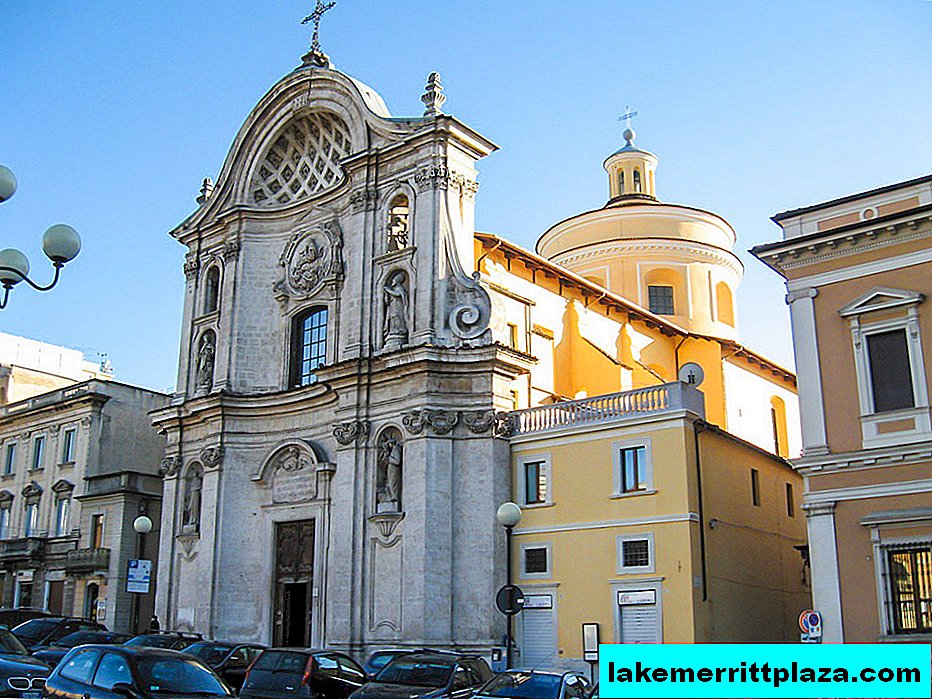In the city of L'Aquila you can find one of the most beautiful churches in the Abruzzo region - the Church of St. Mary of the Helper or as it is also called the Church of the Holy Souls (La chiesa di Santa Maria del Suffragio, Chiesa delle Anime Sante), founded in 1713 as a room for the brotherhood of the Virgin Mary of the Helper, or suffragists, from which she got her name.
Story
The decision to build the church was made after the earthquake in 1703, when the old oratorio of the brotherhood was almost completely destroyed. Over the next 10 years, disputes continued about its location. The dispute was resolved in 1713, when the foundation was laid on the main square in L'Aquila. The creation of the building itself began in 1715 and ended in mid-1775.
The work was entrusted to Carlo Buratti, a student of Carlo Fontana himself.
Description
The architect designed a rectangular building with a cylindrical vault, with two aisles on each side. The standard was taken by the Church of Jesus (Il Gesu, Chiesa del Gesu) in Rome. The presbyter housed the transept and lighting of this part due to the large eight windows. The dominant element was the neoclassical dome, completed only in 1805 by Giuseppe Valadier.

Already in 1726, suffragists held services inside the church, which had a central altar and 4 side chapels bearing the names of St. Joseph, St. Barbara, St. Anthony of Padua and John the Baptist. In 1753, the construction of the facade was led by Antonio Bucci according to the plan of Gianfrancesco Leomporri.
The facade bends, as if hugging the square. So the building interacts with the city. The facade is divided into five zones by double Corinthian pilasters. A pediment with an allegorical image of death is installed above the entrance to the church. The central element of the building is the medallion of Our Lady.
Our days

As a result of the earthquake on April 6, 2009, the church was destroyed. The restoration of the church took 4 years and was financed by France (3 million 250 thousand euros) by order of President Nicolas Sarkozy.
Today, the Church of the Holy Souls is open to parishioners and visitors.
How to get there
A bus from Gruppo Baltour runs every half hour to Aquila from Rome, the trip takes 1.5 hours. The fare is from 9 to 11.50 euros. You can view the bus schedule and book a ticket at www.baltour.it. You can also travel around the Abruzzo region on a rented car, you can choose the right option using the auto.italy4.me service








